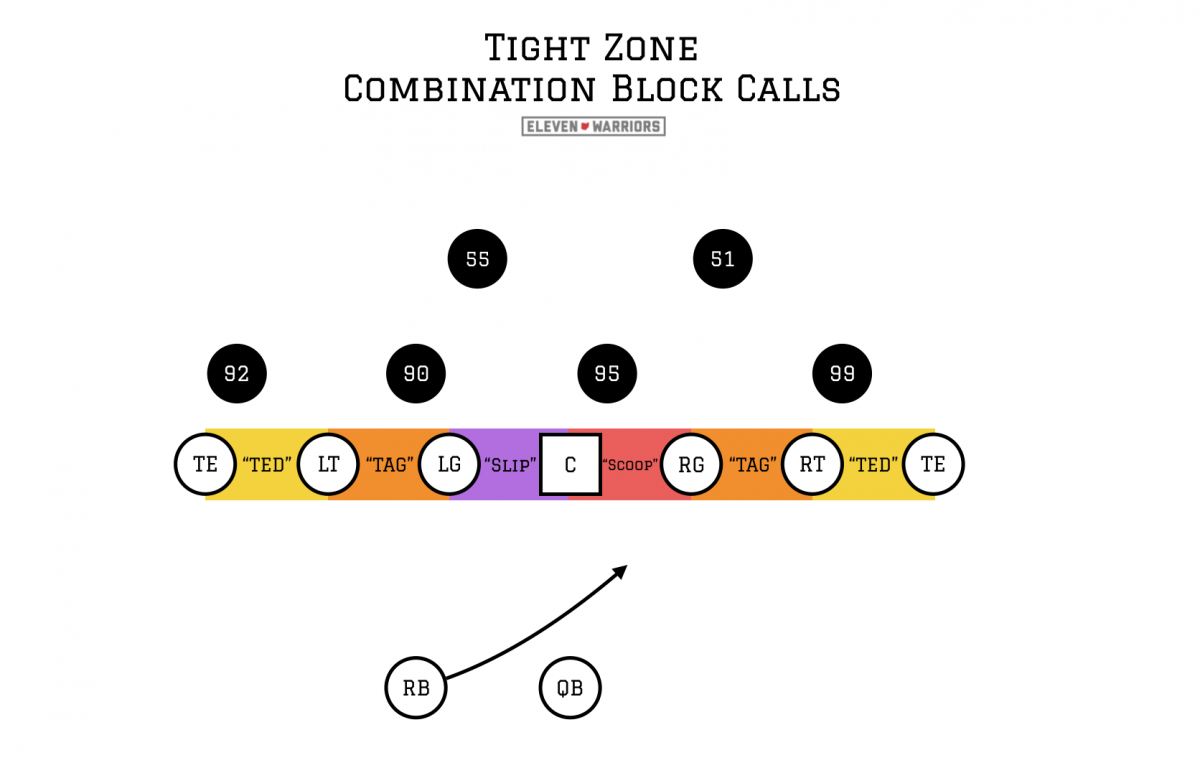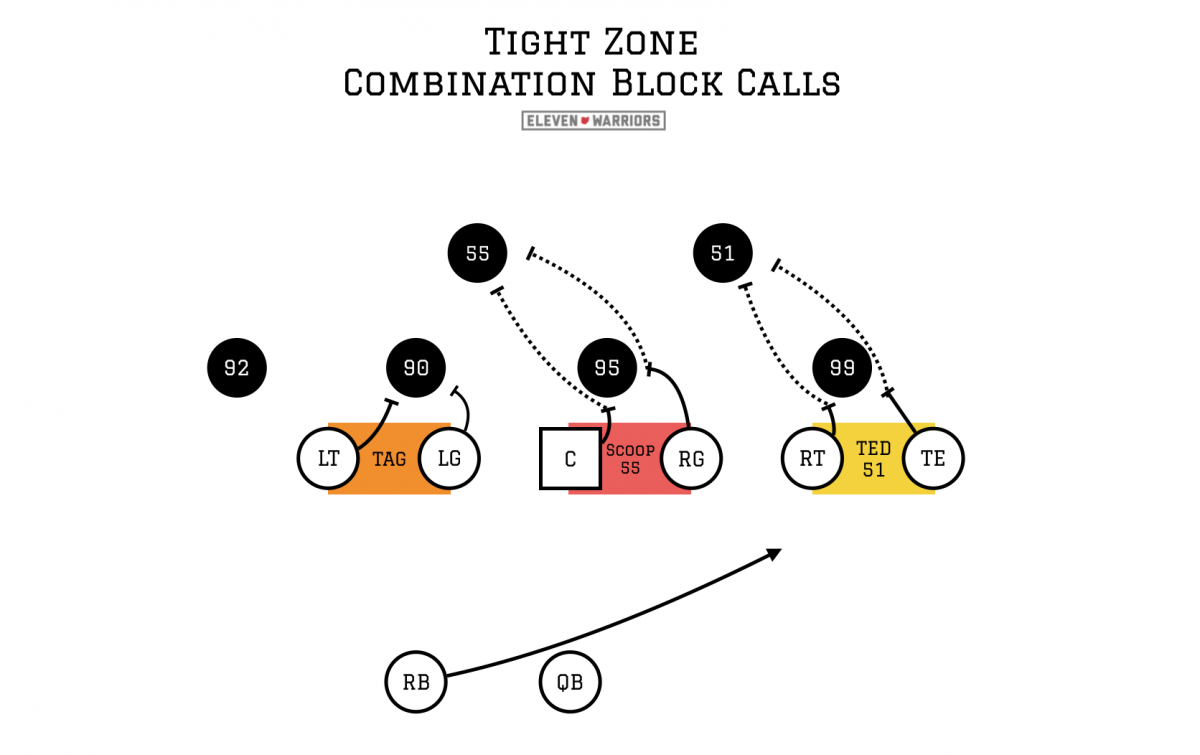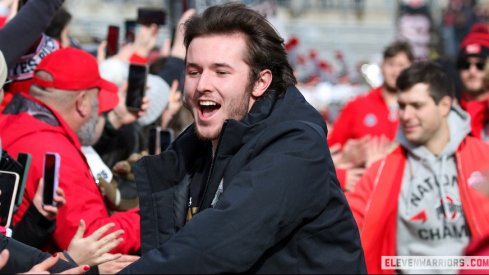Perhaps more than anything else, trust is the key to making Urban Meyer's offenses hum at full speed.
Though the Ohio State head coach had assembled what many dubbed to be an 'all-star' cast of assistant coaches upon taking the job, many forget how lackluster his team looked at times in his debut season of 2012. Despite going 12-0 and quarterback Braxton Miller being named Big Ten player of the year, the OSU offense was defined by inconsistency that year, with explosive performances against Nebraska, Indiana, and Illinois dragged down by sub-par showings against Wisconsin, UAB, and Purdue.
Throughout that fall, the tactics of new play-caller Tom Herman were often on the receiving end of negative critiques from the countless experts on message boards and social media, most of whom expected the Buckeyes to look like Meyer's championship teams from the University of Florida on day-one. Herman would of course go on to lead some of the best offenses in school history over the next two seasons and be a major reason for the 2014 national championship run, but only after Meyer had fully embraced his play-caller's instincts.
Make no mistake, Urban Meyer will always shape the overall shape and style of the Ohio State Buckeye offense while he's in charge of the program, but he must have lieutenants that can execute the proper tactics in order for those larger strategies to succeed. At the end of his time in Florida, the program's success had begun to slide as top assistants like Charlie Strong and Dan Mullen left to lead programs of their own. To fill the voids they left behind, Meyer promoted from within, leaving gaps in trust at the micro-level that forced him to take on far too many responsibilities and nearly destroying his health in the process.
As we know now, that model is not sustainable, and there's no clearer answer to the question of 'What did Meyer learn from his time at Florida?' than what we're seeing this offseason in Columbus. First, Meyer replaced departed defensive coordinator Chris Ash, now the head coach at Rutgers, with former NFL head coach Greg Schiano. Schiano's credentials as a defensive mind are nearly impossible to find at this level, giving him instant credibility within the Buckeye locker room.
On the offensive side of the ball though, Meyer seems to be making up for past sins with his most recent hire. After Ed Warinner was promoted to play-caller after coaching the OSU offensive line for the previous three seasons last winter, his duties in the trenches were not relinquished, leaving him to pull double-duty for much of the 2015 season.
As we all know now, Warinner was accompanied by Herman's replacement, new QB coach Tim Beck, as his co-coordinator. This of course led to many heaping blame on Beck, as surely the coaches that had been there before could not have led the unit to the inconsistencies we saw against Hawaii, Northern Illinois, and Michigan State.
But while Beck may have been the scapegoat for the 17-14 loss to the Spartans that ultimately kept the Buckeyes from reaching their potential, the existing coaching structure was set up to fail. Warinner was stretched too thin while Beck was learning a new system, leaving Meyer to often overrule the duo and create a play-calling triumvirate that wasn't sustainable. To ensure that doesn't happen again though, Meyer is bringing in a coach that will undoubtedly allow him to get more sleep at night.
Simply by his resume alone, Greg Studrawa would be considered a great hire for nearly any program. The former offensive coordinator at LSU led the Tigers to a spot in the BCS title game in 2012, and is known as one of the best teachers of zone-blocking in the country.
As we can see in the video above, Studrawa is well-versed in the intricacies of teaching the inside (aka 'tight') zone concept that is the foundation of Meyer's entire offensive philosophy. As he notes, this is the first concept he taught when LSU training camp began, which means he won't have to change a thing when practice resumes at the Woody Hayes Athletic Center this spring and summer. When installing the concept, the Fostoria, Ohio native focuses on instilling four keys that each player must follow before the ball is even snapped.
First, when his troops (including the tight end if one is lined up in his traditional alignment next to the tackle) line up, they immediately identify if they're covered or uncovered by a defender. This is often considered the foundation of any zone-blocking scheme, and to the untrained eye can often seem to be the only thing that matters in the philosophy.
Once his linemen have identified if they're uncovered, the second thing they'll do is make a call with a teammate to their inside, letting them know that help will be coming their way. The calls are designated by the players involved, such as the tackle and tight end end being 'Ted' and the tackle and guard going by 'Tag.'

But those first calls only deal with the down defensive linemen, meaning the linebackers still must be accounted for. To handle them, the lineman making the call will also attach the number of the linebacker that they'll keep an eye on, knowing that one of them will eventually branch off the double-team and take him on.
Linebackers and defensive linemen will often play games with blockers, trading the gaps they'll attack in hopes that the linebacker will come out unblocked and able to make an easy tackle. For this reason, Studrawa's offensive linemen don't decide who will take on the linebacker before the ball is snapped, forcing both players to account for the defense's movement.

The third thing Studrawa's linemen do before the snap is identify the defensive front. While this may seem unimportant given the previous two steps, cataloguing the defense's alignment can provide needed context from earlier plays in the game to help determine how they may have handled a play the last time it was called.
This proved to be an issue at times for the Buckeyes in the early part of the season, as they struggled to deal with 'odd' fronts specifically. While play-calling seems like the obvious solution to countering what the defense may do, the beauty of zone blocking is that it should work against any front, so long as the line is able to identify and communicate where each member of the line should be headed.
Only after the offensive line has determined if they're covered, who they'll be working with, and what the defense is doing, will they then focus on their technique. This is where the countless hours on the practice field will come into play, as footwork and hand placement are paramount in the battles that take place along the line of scrimmage.
The good news for Ohio State is that much of this echoes what Warinner has been teaching his charges in Columbus for the past four seasons, meaning the transition for returning players like Pat Elflein and Billy Price should be an easy one. But Meyer isn't sacrificing the future either with this hire, as Studrawa will be teaching the necessities of playing for the Buckeyes' head coach.
That doesn't just mean zone blocking, either. Studrawa's line at Maryland this past season opened holes for 'gap' schemes the Buckeyes also run, like Counter-Trey and Buck Sweep.

Even though the Terps struggled to win games and ultimately saw the coaching change that would free up the line coach to join the OSU staff, it wasn't for the fault of the offensive line. Before Studrawa joined the program in 2013, they averaged 4.05 yards-per-carry. In 2015, they averaged 5.46, good for 12th in the nation.
Without question, this all makes for an impressive LinkedIn bio. But that's not the reason why Studrawa was such an important hire for the Buckeyes. His presence allows the other offensive coaches to worry about their specific responsibilities, most importantly those of Warinner and Beck.
Which leads us back to trust. Studrawa will have Meyer's trust from day one in Columbus because he already earned it 15 years ago in Northwest Ohio. When Meyer took his first head coaching job back at Bowling Green in 2001, Studrawa was brought in as his first O-Line coach, helping build the head man's core offensive philosophy from the very beginning.
Even though the Buckeyes have to replace eight starters on the offensive side next fall, there's still very real reason for excitement. The coaching structure is now in a much better place with Warinner calling plays while Studrawa and Beck focus on their individual positions. However, they're still able to provide valuable insights on game days given that they've called plays themselves before.
As so much attention shifts to recruiting this time of year, with fans wondering who may have immediate impact on the field, the real answer probably isn't an 18-year-old with five stars, but rather a 51-year-old wizard on a whiteboard. While his hiring might not be the most exciting, watching Buckeye running backs gash defenses year after year certainly is, and his presence is as big a reason as any for them to do so.
Trust me.

